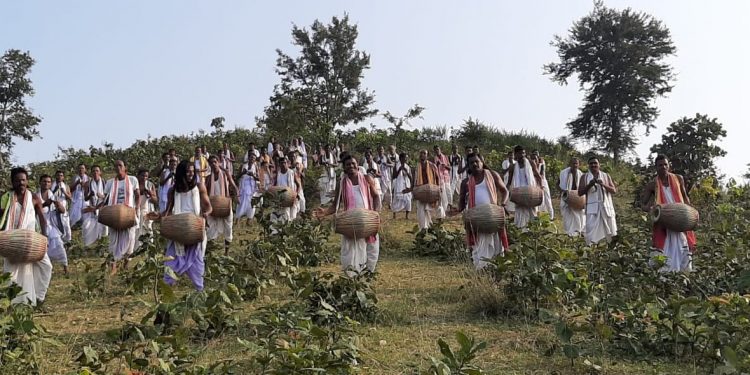Padmapur: Members of scheduled tribe community in Padmapur sub-division of Bargarh district have been rehearsing ‘Karma’ dance for days now.
They are trying to congregate 3,000 ‘Karmasani’ folk artistes to participate in the ethnic dance festival and storm into the Limca book of records.
Planning and Transport minister Padmanava Behera inaugurated the ground-breaking ceremony on Mahajan Dunguri (mound) near Saradapalli village for the upcoming ‘Karmasani’ festival to be held January 5.
Gaisilet block vice-chairperson Pranya Sahoo, president and members of Sambalpuri Folk Academy were also present during the ceremony.
The minister also shook a leg in the rehearsal with the tribals.
‘Karmasani’ festival is mainly celebrated by the tribal people of Mayurbhanj, Sundargarh, Bolangir, Keonjhar, Dhenkanal, Sambalpur and Bargarh districts. The festival is an annual celebration held in the Hindu month of Bhadraba. Not just in Odisha, Karma festival is also widely celebrated in the states of Bihar and Madhya Pradesh.
The festival is devoted to the god Karam or Karamsani and celebrated by the tribes including Kisan, Bhumji, Ho, Binjhals, Kol, Bhuiyan, and Oraon.
The preparation for the celebration begins at least ten to twelve days before the day of the occasion. Young folk of the villages go out to the jungle to collect the wood of the Karam tree along with fruits and flowers on this day and are generally carried by the young girls.
A branch of a Karma tree represents the presiding deity of this beautiful festival. The ritual of this fete states that the locals along with groups of drummers go to the jungle to cut branches of Karam tree scientifically known as Nauclea Parvifolia.
The branches are then carried back by young and unmarried girls who together sing to pay homage to the deity. While singing, these unmarried girls bring the branches to the village to plant them in the ground by using cow dung and also decorate them with flowers.
After the plantation, the priest of the village offers liquor and germinated seeds to please the deity for wealth and children and then narrates the whole significance of the festival to the entire village.
The ritual also includes animal sacrifice where a fowl is killed and his blood is spread on the branches.







































